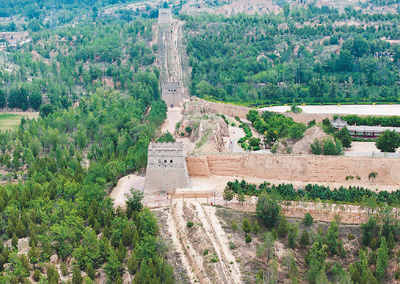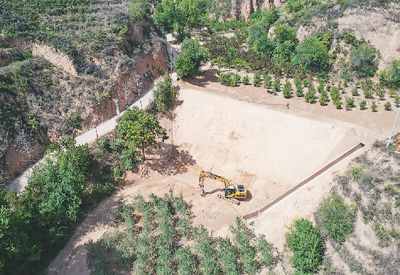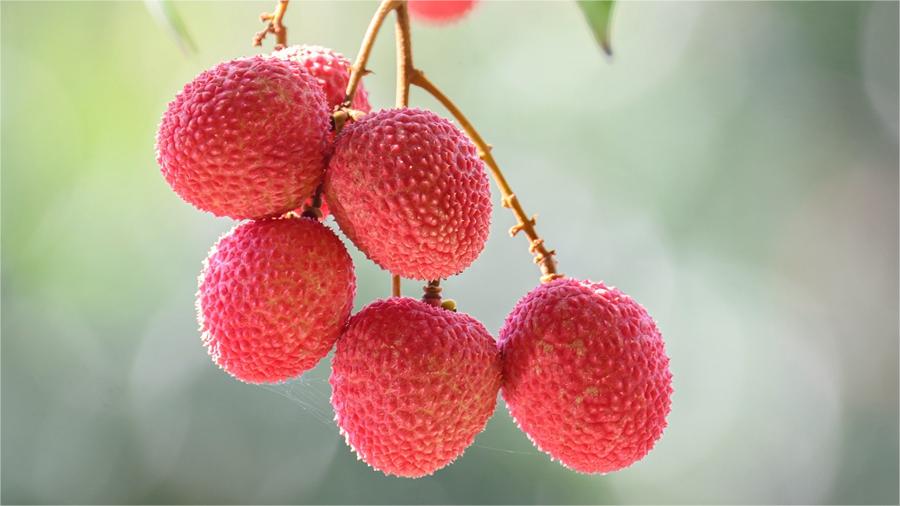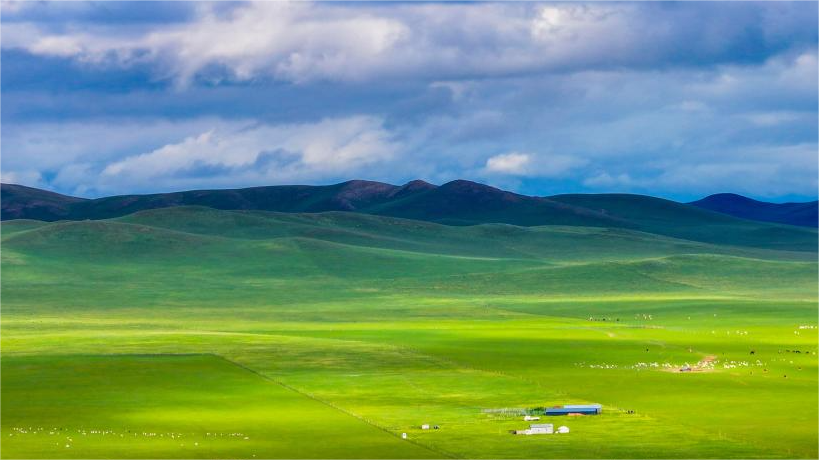NW China's Shaanxi builds 'green miracle' in Yellow River Basin
Situated in the middle reaches of the Yellow River, northwest China's Shaanxi Province has promoted ecological conservation and high-quality development along the river, building a "green miracle" in the Yellow River basin in the province through relentless efforts.

Photo shows a green shelterbelt near watch tower Zhenbeitai in Yulin city, northwest China's Shaanxi Province. (Xinhua/Shao Rui)
Greening the Loess Plateau
A vast woodland combining trees, shrubs, and grass stretches out as far as the eye can see at the Mu Us Desert afforestation base in Shenmu, a county-level city administered by Yulin city, located on the Loess Plateau in Shaanxi.
It's hard to imagine that the woodland was once a barren desert area plagued by sandstorms years ago. Elders of the area shake their heads remembering the past, stating that sandstorms would sometimes last for days, leaving a layer of sand in their yards that had to be scooped out with dustpans. Today, the main color palette has transformed from “yellow” to “green”.
"Now, we systematically monitor wind speed, moisture, microorganisms, etc. in the woodland," said Zhang Yinglong, president of the Shenmu ecological protection and construction association and a veteran in desertification control. He added that combating desertification relies on science and technology.
Over the past 21 years, Zhang and his team have developed a series of afforestation techniques and models. Their process involves three steps. First, planting psammophytes, which are especially adept at growing in sand, to reduce wind erosion; second, planting shrubs to stop migrating sand; and finally planting trees to gradually form a forest. The team, working on an area of 428,000 mu (28,533 hectares), has seen vegetation coverage increase from 3 percent to 65 percent.
Building barriers to protect soil and water
Yulin city has brought 8.6 million mu of shifting sand under control and expanded its forest area from 600,000 mu in the early days of New China to 23.6 million mu today, creating a "green miracle."
A similar story has unfolded in Yan'an city, also located on the Loess Plateau in Shaanxi, thanks to over two decades of afforestation efforts. Data shows that the city's vegetation coverage has increased from 46 percent in 2000 to 81.3 percent in 2023.
Over the past few years, Shaanxi has been able to move the border between green and desert northward 400 kilometers. Since 2020, the province has planted nearly 18.36 million mu of trees and tackled over 3.89 million mu of desertified land in the Yellow River basin.

An excavator works on enhancing a warp-land dam at the Xindiangou water and soil conservation demonstration park in Suide county, Yulin city, northwest China's Shaanxi Province. (Xinhua/Li He)
The rugged terrain of the Loess Plateau at the Xindiangou water and soil conservation demonstration park in Suide county, Yulin is now covered in lush greenery.
Xindiangou, which features loess hills and ravines, was once plagued by water and soil erosion, with huge amounts of mud and sand flowing into the Yellow River.
To combat soil erosion, a "three lines of defense" management model was formulated.
The first line of defense involves constructing terraced fields on the ridges and upper regions of loess hills where the slopes are relatively gentle. Fruit trees and a rotation of grass and crops are planted on the terraced fields to modify the terrain and prevent water and soil erosion.
The second line focuses on the cultivation of shrubs along with timber and grass on steep ravine slopes to stabilize hillsides and prevent erosion.
The third line emphasizes the construction of warp-land dams, or silt dams, at the bottom of ravines for further flood control, sediment trapping and farming.
Using an analogy, the “three lines of defense” equates to putting hats on the ridges by building terraces, dressing the slopes in coats of tree and grass, and boots on the valley bottoms with slit-damns, explained Gao Jianjian, head of the Ecological Engineering Department at the Water and Soil Conservation Bureau of the Yellow River in Suide. Gao went on to say that through decades of effort, 80 percent of the area facing water and soil erosion has been treated, with a forest and grass coverage of more than 75 percent.

Photo shows the lush vegetation of Yan'an city, northwest China's Shaanxi Province. (Xinhua/Zhang Bowen)
Xindiangou is a good example of the comprehensive treatment of water and soil erosion taking place in the rest of northern Shaanxi. Data reveals that in 2023, areas in Shaanxi facing water and soil erosion decreased by 1,261 square kilometers compared to the previous year, and its water and soil conservation rate increased to 70.15 percent.
The water quality of the Shaanxi section of the Yellow River’s mainstream has reached the Level II standard for two consecutive years, according to an official with the Shaanxi Provincial Development and Reform Commission. An annual average of 4,000 square kilometers of land in the Yellow River basin in the province has been saved from water and soil erosion. The Loess Plateau has become the region with the largest increase in green coverage nationwide.
This "green miracle" has yielded both ecological and economic benefits. Yan'an city, for example, has 3.32 million mu of apple orchards with an annual apple output of 4.32 million tonnes, accounting for one-third of Shaanxi's apple production and one-ninth of China's total output. Out of the city's population of over 2 million, more than 1 million people are engaged in the apple industry. The sector benefits 800,000 farmers, with apple sales contributing to 61 percent of their operational income.
Dali county in Weinan city, located in the Yellow River basin in Shaanxi, has seen similar success with fruit cultivation. In 2023, the county produced 500,000 tonnes of winter jujubes, and over 300,000 people worked in the winter jujube industry, with farmers earning an average annual income of more than 100,000 yuan.
It's not just apples and jujubes. Across the Yellow River Basin in Shaanxi, vegetables, kiwi fruit, and various grains from northern Shaanxi are thriving. From "ecological beauty" to "ecological wealth," an increasing number of people are turning green into gold.
"As clear waters and green mountains are invaluable assets," an official in the Shaanxi Development and Reform Commission affirms, "we will continue our efforts to comprehensively promote the ecological protection and high-quality development of the Yellow River Basin."
Photos
Related Stories
- The greening of China in 2023
- County once tormented by desertification builds "green miracle" in NE China's Liaoning
- China makes notable achievements in afforestation in 2023
- China's Jiangsu to complete afforestation of 40,000 hectares by 2025
- Extending "green Great Wall" in north China
- Turning deserts into forests: How China is helping the world go green
- County in SW China's Yunnan afforests stony mountains, develops green industries
- A villager's four decades of commitment to afforestation
- China's Inner Mongolia to pool 100 mln yuan for major sandland afforestation
- Inner Mongolia ranks first in China in afforestation
Copyright © 2024 People's Daily Online. All Rights Reserved.









